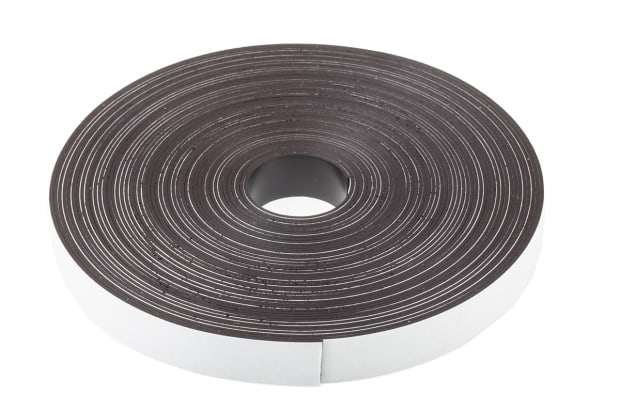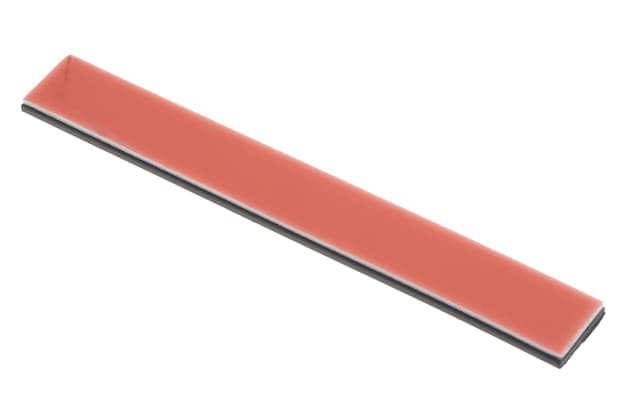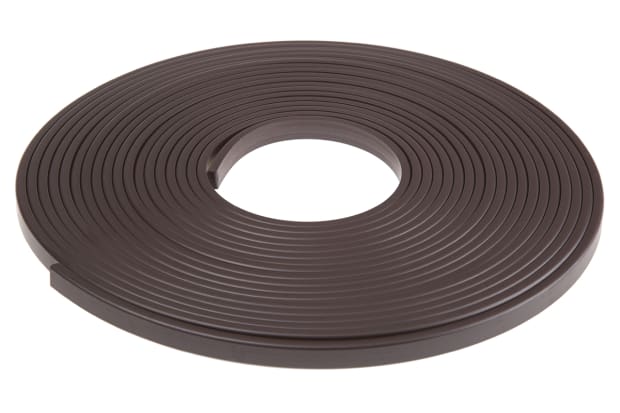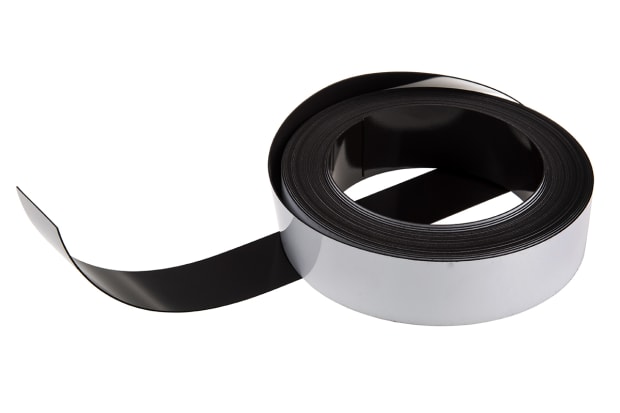- เผยแพร่เมื่อ 8 มี.ค. 2566
- แก้ไขครั้งล่าสุด 29 ส.ค. 2566
- 7 นาที
A Complete Guide to Magnetic Tape
An easy to follow guide that explains all you need to know about magnetic tape including the various uses.

What is Magnetic Tape?
A simple magnetic tape definition would state that the tape uses magnetism rather than conventional adhesive for its primary gripping power. This allows quick and easy adjustment, removal and reuse.
As a result, magnetic tape, meaning simply a form of tape which uses magnetism, is often used across a wide range of industries and applications. It is ideal for use in commercial environments and is an ingenious and versatile alternative to adhesive tape.
Some of the most common constituent materials are strontium ferrite or barium ferrite. An alloy of these elements with magnetic iron particles is typically encased in a heat-sensitive plastic binding material to create the finished product.
What is Magnetic Tape Used for?
Commercial magnetic tape is used in a wide variety of settings and applications for many different purposes. Some examples of environments where it could be used include shops, factories, and exhibition halls. It can also be found where signs, posters, dividers, placards and point-of-sale material are displayed but also routinely changed.
Additional uses of magnetic tape include:
- Creating a temporary storage space for ferromagnetic items (i.e. made from a material that is attracted to magnets)
- Storing tools or other items close to machinery for speed, efficiency and ease of access
- Holding handleless doors closed

Where to Buy Magnetic Tape
RS Components stock a wide range of magnetic tape types, ideal for your requirements. Our offering includes varying lengths, widths, thicknesses, magnetisation, and backs, enabling you to easily identify the most suitable tape for your project. We also stock products from several leading brands as well as RS Pro, our own in-house line.
Shop online with RS Components today and choose a high-quality tape sure to fulfil your requirements.
Magnetic Tape Storage
Additionally, a different kind of magnetic tape was used as a method of storing large amounts of recording media such as video, audio, and computer code until the development of modern information technology. Magnetic tape in computer and secondary storage applications is being used less and less nowadays. However, it is still sometimes used as a medium for archiving, backups, and data storage. This is because it is a capacious medium and therefore provides more storage space than alternatives like USB sticks and rewritable disk drives. However, with the rise in popularity of cloud-based services, tasks like routine computer backups are becoming increasingly less likely to use a magnetic tape storage solution.
In terms of magnetic tape capacity, up to fifteen terabytes of data can be stored on a single roll of tape. To put that into context, modern desktop PC hard drives typically have a capacity of anything from 1 to 16 terabytes. Despite this impressive magnetic tape storage capacity, alternative storage mediums are often preferred nowadays due to the various limitations of magnetic media.
It should also be noted that these kinds of storage devices have drawbacks as a data retrieval medium. It is a ‘serial’ access product, meaning that the reading device must fast-forward through the magnetic recording tape from the beginning to access a particular piece of data. This is a slow and laborious process in comparison to RAM (random access memory) which can be accessed in any order.
Types of Magnetic Tape
Magnetic tape rolls are available in a variety of lengths and materials, with a range of backings for different circumstances. Sizes are usually measured in metres or millimetres (mm). The tape is usually easy to cut if you require a specific or more precise length.
For magnetic tape, white and black are typically the most common colours. This could also refer to the colour of the backing material, with gloss white coated tape being a popular option for aesthetic reasons. Strong magnetic tape is ideal for heavier-duty applications, but as a general rule, most varieties are durable and feature an impressive pull force.
Here is a little more detail on some of the different types of magnetic tape:

Adhesive Backing Magnetic Tape
This type features a standard adhesive layer along the back, allowing it to be attached to straight or curved surfaces which are not ferromagnetic.
The pressure-sensitive adhesive included on many such products allows for easy application. Self-adhesive magnetic tape can also be doubled (one magnetic strip can be laid on top of another) for an additional magnetic charge.

Plain Back Magnetic Tape
Plain magnetic tape is a variation of adhesive back tape, with no adhesive included. This allows users to apply their own - making this product ideal for use in specialist settings.

Traditional Back Magnetic Tape
Traditional back tape simply features a magnetic back rather than an adhesive one. It is ideal for use in environments with abundant ferromagnetic surfaces - for example, the steel racking in warehouses.
Traditional back tape frequently features wipe-on, wipe-off surfaces for the creation of temporary signage to display key information such as stock levels and product codes.
Magnetic Tape Advantages and Disadvantages
There are a number of advantages and disadvantages of magnetic tape. Some magnetic tape advantages include its strength and durability, while one of the main disadvantages is its limitations when working with non-magnetic items.
Additional advantages of magnetic tape include:
- Versatility
- Easy removal
- Suitability for use across many different environments and industries
- Flexible properties
- Cost-effectiveness
Further disadvantages include:
- Smaller strips may generate a weaker magnetic field
- Loss of effectiveness in extreme temperatures
- Removal may leave adhesive residue on surfaces
FAQs
How Strong is Magnetic Tape?
Strength can be calculated using the following formula:
- Calculate the surface area of the tape by multiplying the length by the breadth. For example, a piece of 30cm long magnetic tape which is 2cm wide will have a surface area of 60cm
- Multiply this figure by its adhesive force per square centimetre. For example, 60cm² x 100g/ cm² = a maximum strength or pull force of 6,000g (6kg)
Is Magnetic Tape Attracted to Itself?
Magnetic tape is available in two forms - type A and type B. Opposites will attract. For instance, if two pieces of the same type are placed on one another, each will repel the other.
Do Magnets Stick to Magnetic Tape?
The purpose of this tape is primarily to mount items to ferrous surfaces. It can also be used to stick materials together. Care should be exercised when using strong magnets near or with the tape - especially magnets stronger than the tape - as this could impact the tape's magnetic performance.
Does Magnetic Tape Stick to Itself?
This will ultimately depend on the specific tape being used. Self-adhesive magnetic tape is recommended if you want to layer multiple strips of tape together. You must also ensure the tape is multi-pole rather than single-pole. This is because strips of single-pole tape will not be attracted to each other and each strip will repel the other. Conversely, multi-pole tape is multi polarity so it will be possible to stick multiple lengths together.
Why is Magnetic Tape Still in Use?
With a wide variety of uses, applications, and suitable install environments, it should not be a surprise that this tape is still widely used today. Providing a range of advantages and coupled with its ease of install and removal, the tape is both cost-effective and highly efficient.